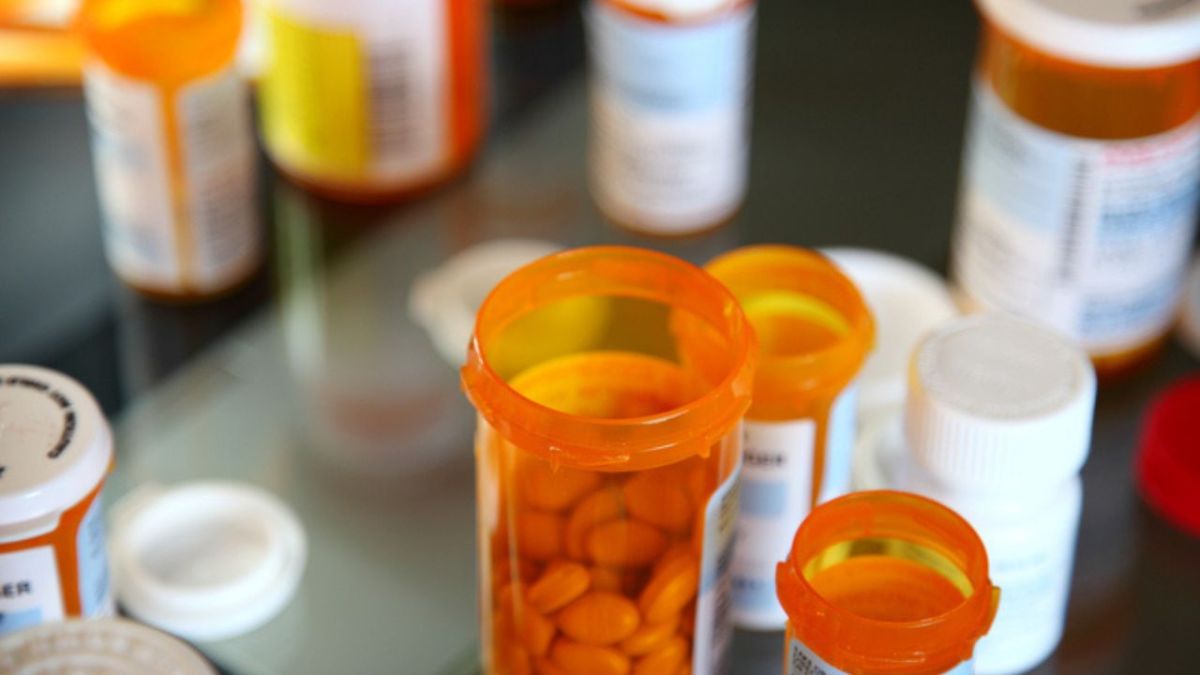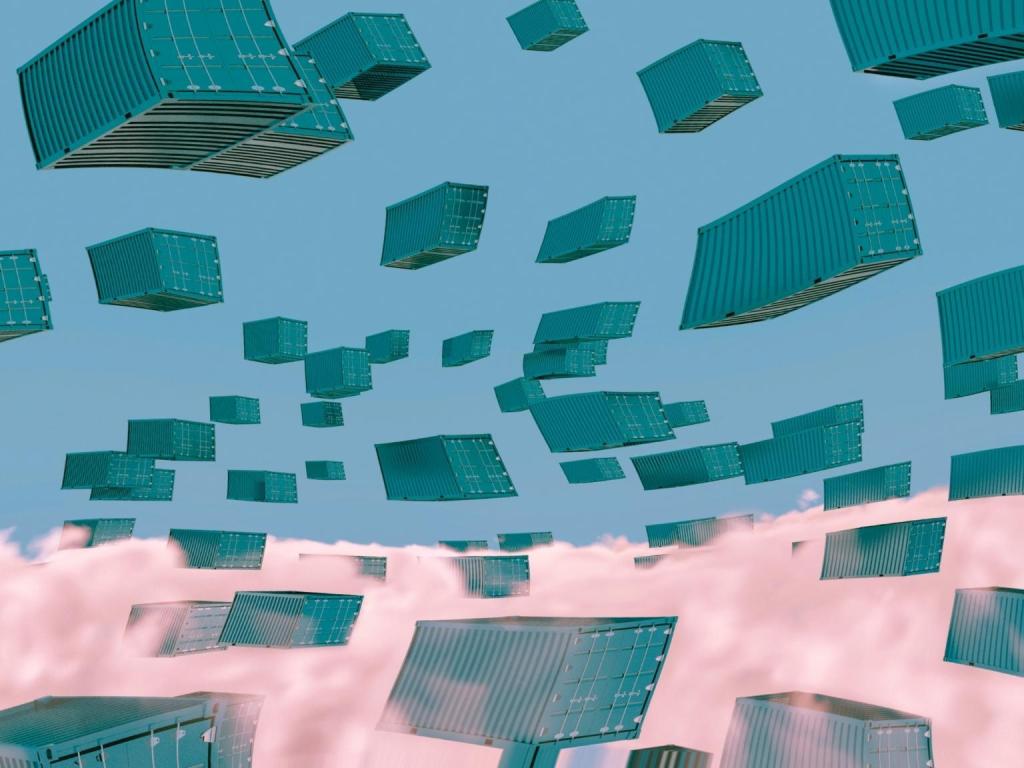Blockchain: Food fraud is estimated to be a global problem to the tune of US$40 billion. Home mortgages take on average 42 days from application through to final settlement. Brexit cost some companies as much as US$100 million for regulatory supply chain compliance. And counterfeit products are estimated to be worth US$432 billion.
A common thread throughout each is the scope for greater efficiencies, cost savings, transparency and fraud prevention. To that extent, blockchain technology may play an important role.
Many proponents argue that there is a critical need for blockchain to take over traditional centralised supply chain management systems since its benefits extend beyond immutability and transparency – it could also result in significant cost savings for companies and greater consumer protection for its customers.
The problem with supply chains
A supply chain essentially refers to a product’s journey from start to finish. The meat you buy, for example, starts on the farm and ends up stacked on the shelf at your local grocery store ready to go in your trolley. In between, a series of businesses were involved in processing, packaging and transporting the end product.
The supply chain itself isn’t often a thought that comes to mind as consumers bite into their steak, but it isn’t a crazy idea to start questioning it. If for example you are passionate about supporting animal welfare, how do you know your steak originated from an ethical farm? Or that your chicken was stored at the correct temperature? What about when you buy a new pair of shoes – how do you truly know the factory workers were paid fairly and working in a safe environment?
Traditional supply chain management has been a grey area that unfortunately has left much room for exploitation, mainly due to the inherent lack of transparency.
Blockchain technology seeks to solve this issue by providing a decentralised ledger of data that can’t be tampered with such that it is able to provide a history of the product’s entire life cycle.
Consider a world where you can simply scan a QR code on a food product and find out its entire history – everything from the farm’s practices and ethical policy to the journey it took to reach the shelf.
That is already happening as Aglive and LAAVA ID are two Australian companies focused on just that – leveraging blockchain technology to bring transparency to supply chains.
Aussie companies leading the way
Aglive is an Australian company that has recognised the need for greater transparency in the food industry by “digitising the food supply chain”. The company, which started on a farm in Geelong, Victoria, focuses on transparency from “the paddock to the plate.” Its platform can track cattle from birth through life to processing to the dinner table – making sure the products are shipped under the right conditions throughout the journey.

Speaking to The Chainsaw, Jarrah Johnson CEO of Aglive believes that “consumers want to know what they are buying … they want to see data”. Continuing, he added that it was imperative that food suppliers “get to the truth, and nothing but the truth”.
If you are what you eat, then you need to know what you are actually eating.
Jarrah Johnson, CEO, Aglive
Johnson highlighted the importance of tracing animals from the point they are born. The purpose of the tag being registered to the farm is in order for consumers to see what type of farm and the conditions the animal was raised in. This is easily accessible for the consumer as a QR code on the product, where they can see where the food is coming from, the entire history.
LAAVA ID is another Aussie company that brings secure, product authentication technology to the market to address the problem of global counterfeiting.
Speaking to The Chainsaw, Gavin Ger the CEO of LAAVA ID, believes the company “helps brands tell trusted stories, especially those brands known for something good such as high-quality producers of wines, food and beauty products”.
Blockchain and the trust mark
The company essentially provides a “trust mark” on each individual product for end-consumers. Ger believes that blockchain technology on the supply chain meets the need for trust, as consumers pay for premium goods and they want to be able to trust what they are buying.
Ger himself fell victim to a lack of transparency when he bought a “nice bottle of Bordeaux” in China. He told The Chainsaw that upon drinking a glass, he spat it out as it tasted like battery acid, leading him to believe that a lack of transparency could lead to deaths. Remarkably, counterfeit wine costs the industry an estimated US$3.18 billion per annum, an issue that Eric Wade of Stansberry Research has previously commented on in the past.
“Let’s begin at the top with the major problem in the wine industry. I’m talking about counterfeit wine – and, more specifically in this example, counterfeit wine in China.”
Eric Wade, Editor, Stanberry Research
Ger elaborated further by pointing to the experience of industry body Apple and Pear Australia Limited (APAL), who said that “a counterfeit product isn’t subject to any of the quality or food safety controls that we usually take for granted…that bottle could have contained vinegar and food colouring, but it could also have contained harmful bacteria or worse.”
Digital fingerprint
LAAVA ID believes that consumer harm may be prevented with blockchain technology. In short, the company integrates a smart digital fingerprint into products that are unique to each product, essentially a last mile solution, where the end consumer can scan and find out important information such as product recalls, if the product is out of date, and most importantly, if it is genuine or counterfeit.
Ger believes this is vital to ensuring that products are “in the right country, for the right buyers”. He noted that occasionally, products land up in the wrong place and consequently, both the brand and consumer suffer. To illustrate, he highlighted the fact that some products were illegal in certain countries – “you can’t drink certain types of milk, or different people might have skin complexion issues with certain types of facial cream.”
Blockchain’s potential over centralised databases such as SQL
Most businesses are currently using a centralised supply chain management system, which reduces all of its data to a single point. By contrast, blockchain is decentralised allowing users on the blockchain to have a secured copy of all records and changes such that each user can view the provenance of data.
According to IBM centralised databases are exposed to human error and malicious activity. By contrast, any unreliable information entered onto the blockchain will immediately be identified. Another major advantage of blockchain is transparency as there is a complete history of every transaction ever made. Users can access an extensive record at any point in time.
However, blockchain major downfall is the cost of operation and speed. It is significantly more expensive and slow to run a blockchain database, rather than a centralised database. And this makes sense. It’s far easier to have one party determine the state of the blockchain than having to check with all of the nodes.
Industries that blockchain can positively impact
Mortgage Industry
The current process of securing a home loan is one that many rightfully dread. According to Home Loan Experts Australia, it currently takes an average of 42 days from submitting your home loan application to reaching settlement. Along the way you are dealing with various professionals including real estate agents, mortgage brokers and bank officers. Most of the delay is due to administrative tasks between the parties – mortgage brokers filling out all your details or banks calculating your eligibility. These and other administrative tasks could all be dramatically sped up through blockchain technology.
Presently, when applying for a mortgage, private information such as bank statements and government records are held by “private and public institutions”. The delay is often due to the requirement for “authorised individuals”, such as a mortgage broker, requiring permission to access this information. Given the amount of information exchanged and the fact that authorisation is done manually, it’s little surprise that real estate transactions take so much time.
By contrast, blockchain mortgages, which use distributed ledger technology, allow for a much speedier and less daunting home loan process, automatically exchanging information between the parties and generating your home loan account, transfer and registration in a fraction of the time.
The benefits of this are plentiful including reduced upfront application and administrative fees, as well as time efficiencies. Some experts have claimed it could reduce application to settlement time from 42 days to about 5 days. Furthermore, there is also the potential for peer-to-peer (P2P) lending with other investors on the blockchain, giving consumers an alternative option to banks, which could lead to banks having to make their rates more competitive. Blockchain mortgages are currently not available in Australia, however experts believe this could become huge in the next 5-10 years.
Healthcare
According to one reputable international medical journal, counterfeit medicine is one of the world’s fastest-growing criminal enterprises.

At least some of this is attributable to the complications of tracking drugs across the supply chain – from packagers to distributors to wholesalers. The report notes that with the traditional supply chain model, it isn’t difficult for participants to engage in counterfeit operations, particularly given the sheer scope of money at play.
Blockchain can provide a solution to counterfeit drug operations by ensuring they can be “tracked through each node of the supply chain via identifiable serial numbers”. As the pharmaceutical drugs pass through each company, they can record transactions, which will assist in validating the provenance of the consumer good in question.
Furthermore, the report highlighted that blockchain being integrated into the healthcare system could give pharmacists confidence that their patients are getting the intended medication. Finally, regulators would be able to recall products and warnings since they could be “instantly updated on the blockchain.”
An important use case of blockchain in Australia
WWF Australia (Worldwide Fund For Nature) recently launched a new online platform, OpenSC (Open Supply Chain), in partnership with BCG Digital Ventures. The platform uses blockchain to track food and help people avoid illegal, environmentally damaging or unethical products.
WWF Australia is determined to help businesses become more transparent with their ethical (or not) behaviour, saying that they are “working to increase visibility and transparency in supply chains with household names like Nestle”.
OpenSC will also work by enabling businesses to track their products. Essentially, anything from food to tissue paper can be traced by assigning a unique ID to an individual product at its point of origin (such as the moment a fish is caught at sea). Unsurprisingly, not everything can be automated and a degree of human involvement, such as that described, is inevitable.
The examples outlined above represent a small fraction of how blockchain technology has the ability to disrupt the supply chain industry through its two core constituent elements: transparency and immutability. Despite being in its infancy, both companies and consumers stand to gain as blockchain becomes an increasingly important consideration in the world of supply chain management.





